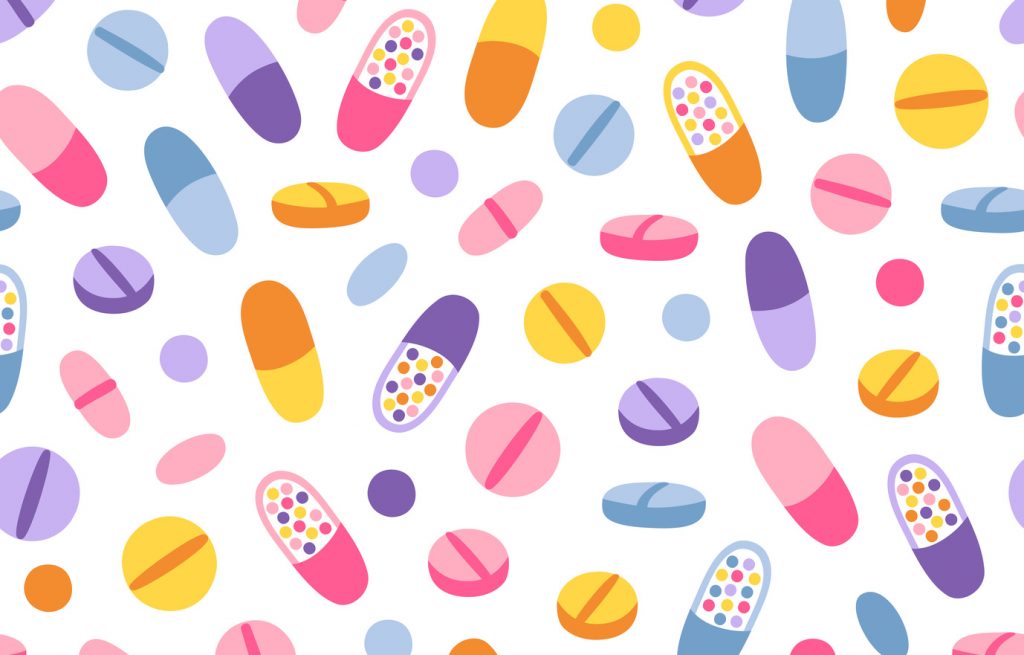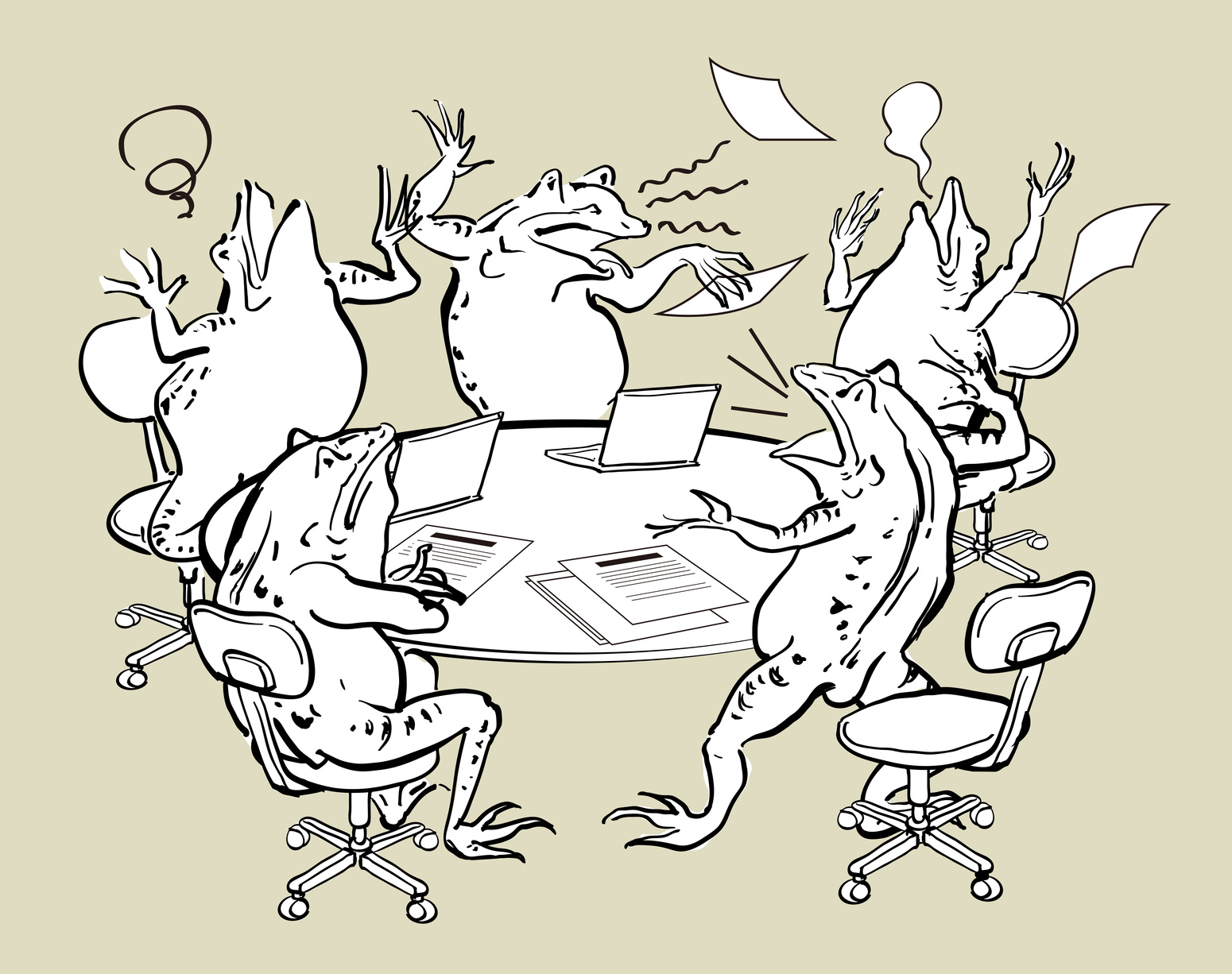
I’m not sure what I intend for this picture to indicate:
- Attention Deficit Hyperactivity Disorder (ADHD)
-or-
- A conversation on smart drugs.
The ambiguity is ironic: Smart drugs are intended to treat ADHD, and they do a rather good job at it, but they replace the attention deficiency with hyperattentive I-need-to-tell-everyone-everything-at-once-RIGHT-NOW!
Of course, I’m exaggerating, but for some this is an issue: Treating inattention with risky substances that may bring issues of their own. Fortunately, we have healthy alternatives to smart drugs, and they’re called (you frickin’ guessed it) nootropics.
While nootropics may not be an exact swap for smart drugs, some seem to possess significant therapeutic potential with regards to ADHD.
Page Contents
Attention: Smart Drugs
I feel like I cover this topic a lot: Smart Drugs vs. Nootropics–because there remains plenty of misconceptions surrounding nootropics due to their nefarious cousins, the quote-unquote “smart drugs.”
Or would the smart drug be the nootropic’s evil twin?
Let’s not get hung up on the metaphor.
One such misconception is that smart drugs (i.e. amphetamines, methylphenidate) are nootropics. This conception is a mis because smart drugs are in fact not nootropics:
Nootropics are required to be side effect free, whereas most smart drugs possess significant levels of risk abuse.

I bring this all up because, in case everyone forgot, most smart drugs are primarily designed and prescribed to treat attention deficit hyperactivity disorder (ADHD) and ADD (essentially ADHD without the H–hyperactivity), disorders characterized by the inability to focus, concentrate, sit still, etc., the former (ADHD) marked by extreme levels of distracting energy.
Smart drugs alleviate ADHD symptoms by stimulating the central and peripheral nervous systems and flushing the brain with high levels of dopamine. Unfortunately, this dopamine rush feels good, and “feeling good” is essentially the Sparknotes description of “how to get addicted.” This explains why “non-prescriptive” smart drug usage is viewed as substance abuse, with most national governments illegalizing these substances as “scheduled drugs.” More on Nootropic Legality.
Due to the growing concern of ADHD med abuse running rampant in schools and workplaces, many health officials and enthusiasts have been searching for healthier means to alleviate ADHD symptoms and/or promote recreational focus and energy. But to do this, we need to understand the basis of ADHD and inattention, one such hypothesis being:
The Catecholamine Hypothesis
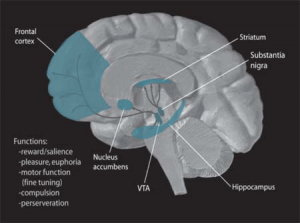
Quick reminder: Hypotheses are not concrete facts.
A hypothesis is a supposition made on the basis of limited evidence, calling for further investigation into the subject being hypothesized. As such the Catecholamine Hypothesis is not exactly law, but it does propose an identifiable theory on why ADHD happens, that theory being that:
ADHD may occur when catecholamine imbalance arises due to any number of physiological factors.
The catecholamines in question:
- Dopamine – Motivational “pleasure-reward” neurotransmitter.
- Epinephrine – Fight-or-fight chemical, a.k.a. adrenaline.
- Norepinephrine – Sleep-wake cycle regulator, attention compound.
ADHD drugs operate based on this hypothesis, given their intention to boost dopamine and norepinephrine, stimulating a temporary, synthetic brain state of intense focus and attention.
Of course, “temporary, synthetic” states of anything aren’t entirely sustainable in the long run, and may induce harsh side effects–in the case of ADHD drugs, those side effects include: anxiety, insomnia, irritation, aggression, and the inevitable CRASH, marked by subsequent states of depression and foggy cognition.
Taking Nootropics for ADHD
Similar to ADHD drugs, nootropics engage the catecholamine system as well.
Except whereas smart drugs flush the brain with inordinate amounts of catecholamine neurotransmitters, nootropics bolster and optimize the catecholamine pathways to enhanced states of self-sufficient functionality.
This is the perfect moment for an age-old cliché:
Smart drugs provide the fish. Nootropics teach to fish.
Does this mean that nootropics adequately substitute the effects of smart drugs?

Not at all. The only substances that can match the brain-pulsing focus brought by smart drugs are other smart drugs. But that’s sort of the point: It takes an unnatural substance to acquire unnaturally high levels of psychostimulation. Nootropics are generally natural substances, or are at least substances that engage with natural pathways to healthier, enhanced cognition.
They’re not intended to blow your mind beyond its limits.
While some nootropic users remain in search of the mythological perfect nootropic stack that provides the effects of smart drugs minus the adverse effects, many take a more moderate approach: Supplementing nootropics to reduce ADHD symptoms, thus reducing the need for smart drugs.
And here are a few that may do just that:
List of ADHD Nootropics
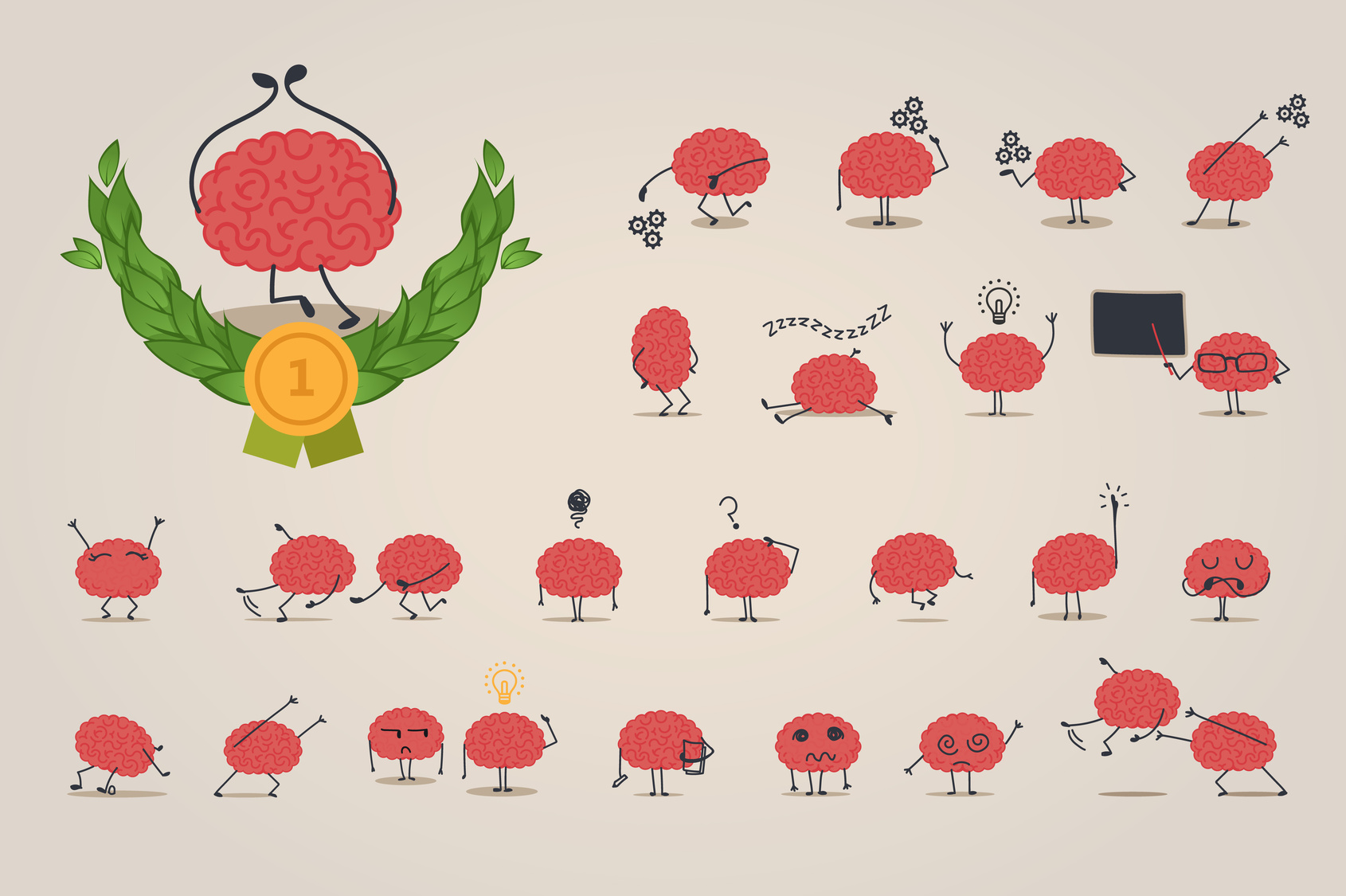
For some, inattention is an annoyance.
For others, it’s a clinical disorder.
Because of this latter group, I’ve added a second list containing a few non-nootropic drugs that reduce ADHD symptoms with less risk of side effect than traditional ADHD pharmaceuticals. However, I recommend consulting with a physician before jumping onto this drugs, considering that they are still somewhat risky substances.
Even so, for either degree of inattention, these nootropics may help:
Nootropics for ADD/ADHD
Pycnogenol

Regardless, supplementing Pycnogenol, the U.S. registered form of French maritime bark extract, does seem to serve a multitude of health benefits, of which includes: Reduced hyperactivity–believed to be an effect of Pycnogenol decreasing urinary excretion of dopamine, epinephrine, and norepinephrine. One placebo-controlled, double-blind study in particular demonstrated a 4-week administration of Pycnogenol causing a significant:
- reduction in hyperactivity
- improvement on attention
- improvement on visual-motoric coordination
on children diagnosed with ADHD. Relapse of symptoms were noted following one month of terminating Pycnogenol supplementation.
Semax
While Semax is commonly prescribed in Russia for a range of cognitive conditions, the rest of the world has yet to fully latch onto this neuroprotective nootropic drug. Likewise, the drug has undergone extensive research in Russia, demonstrating significant benefits on depression, anxiety, and ADHD with low-to-no risk of side effect (indicated by a lack of hormonal activity).
So what’s the catch??
The research is strong in suggesting there is no catch: Semax seems to reliably alleviate ADHD and neurodevelopmental issues, giving it immense therapeutic potential. Yet, anecdotally, the cognitive effects seem to be short-lived, at least when taken alone. As such, Semax may operate as an as-needed nootropic for quick boosts on mood, focus, and concentration. Conversely, there doesn’t seem to be much of a tolerance build up, so no need to worry about having to suck up a serving of Semax every 3 minutes further down the road.
Racetams + Choline

This is a great starter stack for nootropic initiates: The classic racetam + choline duo.
There are a number of racetams to choose from, ranging from the most basic racetam (Piracetam) to the WADA banned stimulant Phenylpiracetam. Personally, I require something heftier than piracetam to feel any noticeable boosts on cognition, but it isn’t a bad idea to start there, or even aniracetam, before moving up the racetam chain.
For choline donors, I have two suggestions with one preferred option: Alpha-GPC and Citicoline–my preferences leaning towards Citicoline. While Alpha-GPC supplies more nootropic choline, Citicoline provides choline and cytidine, which converts to uridine. Rat research suggesting of the choline + uridine combo may alleviate hyperactivity, attention, and spatial learning.
Racetams on the other hand promote neurotransmitter acetylcholine production, which requires raw choline material for synthesis. This is why racetams + choline donors are often taken together. More on racetams.
What about Noopept?
Noopept often gets lumped with racetams, despite not being a true racetam. However, its similar structure to piracetam and aniracetam gives it racetam-like effects, only more potent and psychostimulatory. Essentially, Noopept overrides the long-term requirement of piracetam supplementation, enacting its benefits immediately. As such it may help with ADHD–however, it’d be nice to see more research on the long-term safety side of this substance. More on Noopept.
L-Theanine + Caffeine
This is an easy addition: Caffeine for the cheap stimulation, L-Theanine for the non-sedative focus and relaxation. If pharmaceutical ADHD therapy is all about huge spikes of neurostimulation for focus and attention, the Caffeine + L-Theanine duo is the low-grade “coffee shop” version of this–except with the added dimension of L-Theanine’s green tea neuroprotection and relaxation.
Even if you’re not big on the caffeine, L-Theanine still makes for a solid anti-ADHD agent, namely for its alpha brain wave boosts–which place the mind in a “free-flow” state of focus–and its benefits on sleep. One study showing 400 mg L-Theanine daily to have a significant improvement on sleep quality and ADHD. This is great given that ADHD may disrupt healthy sleep patterns, which may exacerbate ADHD issues. L-Theanine prevents this vicious circle from spiraling. More on L-Theanine.
N-Acetyl-L-Tyrosine
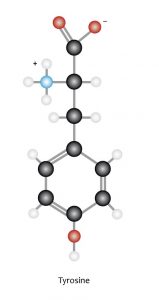
With that in mind, L-Tyrosine is great for in-the-moment boosts on focus and attention during otherwise stressful situations.
This is relevant to ADHD considering the role of stress in worsening ADHD conditions, as well as the underlying biomechanics of ADHD as they relate to the Catecholamine Hypothesis. However, there is one issue involved with long-term Tyrosine supplementation: Over time the brain builds a tolerance to Tyrosine supplements.
Thus, N-Acetyl-L-Tyrosine isn’t a viable long-term option for treating ADHD but rather an occasional boost on focus, mood, etc. when it matters most. More on Tyrosine.
Phosphatidylserine (PS)
Another nootropic compound linked to dopamine and norepinephrine, Phosphatidylserine (PS) is a key component to brain cell membrane health, commonly associated with memory and long-term neuroprotection. In fact, this is one of the few nootropics recognized by the FDA for its awesomeness, a rare event in the realm of cognitive enhancers.
While researchers can’t quite pin down how PS helps ADHD, one small, randomized, double-blind, placebo-controlled study demonstrated 2 months of 200 mg PS administration having significant improvements on ADHD symptoms and auditory memory among school-age children. It’s high safety rating allows PS to be taken long-term.
TAKE NOTE: Not all PS is the same. Most PS supplements opt for the soy-derived stuff, but I prefer the sunflower extracted PS, due to soy’s negative association with ADHD. More on Phosphatidylserine.
Omega-3 Fish Oil

Fish oil supplements don’t outright qualify as nootropics, given their equivocal status as “cognitive enhancers.” Yet, their status as brain healthy nutrition is inarguable, given the importance of omega-3 fatties (DHA and EPA) to brain development and health–and, consequently, cognition.
While I don’t view fish oil as the ultimate solution to attention deficit disorders, one review of several studies found Omega-3 to have a “small but significant effect in improving ADHD”–which seems worth the typically cheap price of fish oil supplements.
When it comes to ADHD therapy, EPA is more important to DHA, which is why you need to look for Omega-3 supplements that hold a higher ratio of EPA to DHA. Additionally, stacking fish oil with phosphatidylserine may help increase absorption of the former into the brain. A double-whammy against ADHD iffen you ask me.
Non-Nootropic Drugs for ADD/ADHD
Memantine
Marketed under the brand names Namenda, Auxura, and Ebixa, Memantine is a non-nootropic drug that acts on the glutamatergic system through blocking NMDA receptors. I reiterate: I say “non-nootropic” based on these drugs’ risk of side effect, a disqualifying attribute according to the traditional definition of nootropics.
Even so, Memantine deserves special attention for the high number of research that validates Memantine’s use as an Adderall alternative therapy to ADHD (study, study, review). Unlike the nootropics covered thus far, Memantine isn’t recommended for recreational boosts on cognition, as consuming beyond therapeutic measures of Memantine has been linked to adverse effects.
Although, in general Memantine is well-tolerated and rarely abused. Even so, here are a few adverse effects to look out for–particularly among younger users:
Common Side Effects of Memantine
- Brain fog
- Dizziness
- Confusion
- Disassociation
- Headache
- Insomnia
- Irritation
Selegiline
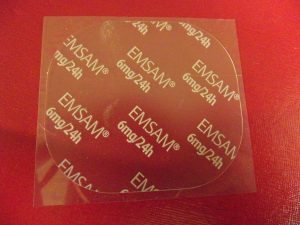
The reviews are mixed on Selegiline. Based on the anecdotal reports and preliminary science, reactions to this drug vary based on dose and personal neurochemistry. I recommend supplementing Selegiline at the behest of a physician while closely monitoring your health and cognitive functionality.
Caution aside, there are a couple studies that deliver divisive reports:
- Study 1 – selegiline administration on ADHD children demonstrated “advantages in the treatment of ADHD” to the degree that it may be considered as a safer alternative to methylphenidate (i.e. Ritalin).
- Study 2 – 6-week treatment of selegiline in ADHD adults did not prove to be more effective than placebo, with high-dose selegiline possessing a higher risk of side effects.
Bear in mind that supplementing Selegiline (as well as Memantine) alongside pharmaceutical smart drugs has been linked to severe side effects as well.
Modafinil or Adrafinil
Wake-promoting drugs Modafinil and, to a lesser extent, Adrafinil are viewed by many as viable alternatives to ADHD stimulant drugs, despite the fact that they are unapproved as a medication to treat ADHD. Instead, they’re prescribed namely for narcolepsy and other sleep disorders.
In terms of treating ADHD, Modafinil has been observed in preliminary research to “be a viable alternative to conventional stimulants for the treatment of adults with ADHD.” The drug was generally well-tolerated by the 22 adults who partook in the study. This may be due to the fact that Modafinil doesn’t alter dopamine levels but rather inhibits dopamine transporters–thus leaving dopamine in a normal state after Modafinil wears off.
Personally, I’m not too big on Modafinil (nor Adrafinil, which converts to Modafinil in the body) given its non-nootropic push on focus–however, as a less risky, non-stimulant “wake-promoter” for serious cases of ADHD, it’s worth checking out.
The Best Nootropic Supplements for ADD and ADHD
Supplementing a single nootropic ingredient may help boost your attention. However, the best plan of attack involves stacking several nootropics that hit several direct and indirect pathways towards better focus, attention, mental performance, etc., etc. For the more advanced DIY nootropic formulator, this may pose a fun challenge. Yet, fortunately, there are premade supplement options that work well for boosting attention. In my opinion, the best nootropic supplements for ADD and ADHD are as follows:
Mind Lab Pro
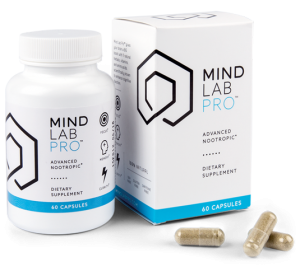 Of the nootropics listed above Mind Lab Pro supplies Maritime Pine Bark Extract, Citicoline (as Cognizin®), L-Theanine (as Suntheanine®), N-Acetyl L-Tyrosine, and Phosphatidylserine (as Sharp-PS®) — i.e., nearly all of the nootropics on my list.
Of the nootropics listed above Mind Lab Pro supplies Maritime Pine Bark Extract, Citicoline (as Cognizin®), L-Theanine (as Suntheanine®), N-Acetyl L-Tyrosine, and Phosphatidylserine (as Sharp-PS®) — i.e., nearly all of the nootropics on my list.
It’s a smart mix of brain optimizing nootropics that not only boost attention on the Catecholamine Hypothesis end but calm an overactive brain via L-theanine relaxation, Rhodiola stress reduction, and whatever PS to relieve ADHD symptoms.
Not to mention that Mind Lab Pro is non-caffeinated and stimulant-free, allowing its users the chance to stack L-theanine with their morning cup of joe — or to simply take L-theanine solo. For the hyperactive mind, this is good, as not everyone actually benefits from supplementary stimulation.
Read my in-depth review on Mind Lab Pro.
Performance Lab Mind
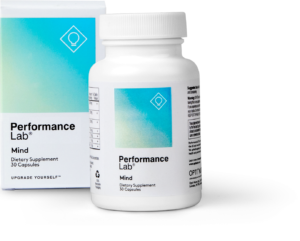 Few nootropic supplements carry Maritime Pine Bark Extract, the first nootropic on my list. Which means that few nootropic supplements supply the ADHD-symptom reducing benefits of Maritime Pine Bark Extract. Performance Lab Mind, like Mind Lab Pro, has this antioxidant-rich extract, in addition to Citicoline (as Cognizin®), Phosphatidylserine (as Sharp-PS® Green), and N-Acetyl L-Tyrosine.
Few nootropic supplements carry Maritime Pine Bark Extract, the first nootropic on my list. Which means that few nootropic supplements supply the ADHD-symptom reducing benefits of Maritime Pine Bark Extract. Performance Lab Mind, like Mind Lab Pro, has this antioxidant-rich extract, in addition to Citicoline (as Cognizin®), Phosphatidylserine (as Sharp-PS® Green), and N-Acetyl L-Tyrosine.
All of which may contribute to better attention.
I’ve also included this formula on my Nootropics for the Adderall Crash list — however, Performance Lab Mind seems best used to reduce the need or crave for Adderall altogether. N-Acetyl L-Tyrosine certainly helps by keeping those catecholamine levels up, whereas the remaining ingredients simply help by keeping the brain fully functional and running, ready to take on whatever greatness you have planned for the day.
Read my in-depth review on Performance Lab Mind.
Qualia Mind
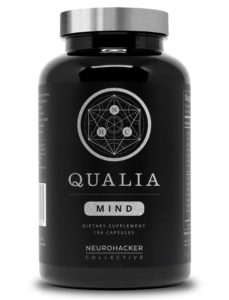 As a simplified version of the Qualia Original Stack, Qualia Mind sports upwards of 28 ingredients, still qualifying as a nootropic super stack — one that fortunately supplies enough capsules per each serving to work. And with that many nootropics under its belt, odds are Qualia Mind works for whatever cognitive goals you have in mind — be they brain energy or, yes, better attention.
As a simplified version of the Qualia Original Stack, Qualia Mind sports upwards of 28 ingredients, still qualifying as a nootropic super stack — one that fortunately supplies enough capsules per each serving to work. And with that many nootropics under its belt, odds are Qualia Mind works for whatever cognitive goals you have in mind — be they brain energy or, yes, better attention.
On the “better attention” end, Qualia Mind supplies several catecholamine boosting ingredients — e.g., N-Acetyl L-Tyrosine, DL-Phenylalanine, L-Dopa — in addition to a wide spectrum of B vitamin co-factors to facilitate the catecholamine conversions.
Having said that, Qualia Mind does supply caffeine, although only 90 mg of the stuff (roughly an 8 oz cup of coffee). But that 90 mg is significantly balanced by the formula’s 200 mg L-theanine, hitting the correct caffeine:L-theanine ratio for calm, nootropic energy. The result: a better nourished, better balanced mind for better attention.
Read my in-depth review on Qualia Mind.
Awakened Alchemy
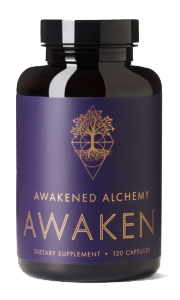 This is one of the more interesting and controversial nootropic supplement options, given Awakened Alchemy‘s diverse mix of natural and synthetic ingredients. On the natural end, I’m seeing much of the same ingredients listed above that help with attention and hyperactivity — e.g., N-Acetyl L-Tyrosine, Citicoline, Phosphatidylserine, L-Theanine. However the stack also supplies a couple risky (because of tolerance concerns) synthetics, such as:
This is one of the more interesting and controversial nootropic supplement options, given Awakened Alchemy‘s diverse mix of natural and synthetic ingredients. On the natural end, I’m seeing much of the same ingredients listed above that help with attention and hyperactivity — e.g., N-Acetyl L-Tyrosine, Citicoline, Phosphatidylserine, L-Theanine. However the stack also supplies a couple risky (because of tolerance concerns) synthetics, such as:
- Noopept – essentially a more intense piracetam that works well with choline.
- Sulbutiamine – seems to improve mood and reduce anxiety.
Altogether, these nootropics combine to simultaneously deliver energized, focus-sharpened attention and calm, relaxed cognition. It’s a unique push-pull stack with an almost bionic natural-synthetic formula design. For those not turned off by the synthetic ingredients, Awakened Alchemy may deliver just the right balance of psychostimulation and cognitive relaxation, if used correctly.
Read my in-depth review on Awakened Alchemy.
Conclusion
Are these the only methods to reducing ADHD symptoms in a healthy manner?
No. More and more research is discovering nootropic and non-nootropic substances that may help alleviate issues with focus, attention, and energy. Additionally, lifestyle habits such as meditation, exercise (HUGE emphasis on exercise), and elimination of artificial foods may come a long way in terms of ADHD, not to mention the various other health benefits that come with these practices.
In case you didn’t know: I’m no doctor.
I realize there’s a trend of misattributing ADHD to common symptoms of malaise restlessness, that could likely be “treated” with something as simple as getting outside more. I don’t wish to contribute to this trend, nor am I prescribing anything here to anyone with actual factual ADHD.
I’m just doing what I do: Geeking out on nootropics–and these nootropics seem particularly good for inattention (which, by the way, can’t be that big of an issue seeing that you made it to the end of this article!).
For more on the subject of nootropics that are particularly good, check out my Best Nootropic Supplements to Buy in 2018 list. And be sure to comment any thoughts, questions, personal anecdotes, haikus, snafus, etc. down below!

